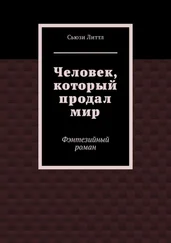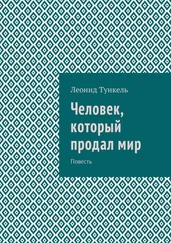J. J. Saunders, 'The Nomad as Empire-Builder: A Comparison of the Arab and Mongol Conquests,' in Rice, Muslims and Mongols pp. 36–66.
Schurmann, Economic Structure pp. 66–67; Thomas T. Allsen, 'Mongol Census-Taking in Rus', 1245–1275,' Harvard Ukraine Studies 5 (1981) pp. 32–53 (at pp. 33–36).
Hans Bielenstein, 'Chinese Historical Demography ad 2–1982,' Bulletin of the Museum of Far Eastern Antiquities 59 (1987) pp. 85–88; Ping-ti Ho, 'An Estimate of the Total Population of Sung-Chin China,' in Fran^oise Aubin, ed. Etudes Song pp. 3–53.
May, Mongol Conquests p. 224.
Brook, Troubled Empire pp. 42–44.
Brook, Troubled Empire p. 45; Fitzgerald, China pp. 312–315.
Buell, Dictionary pp. 211–215; Brown, History of Climate Change p. 218; J. D. Durand, 'Population Statistics of China, ad 2–1953,' Population Studies 13 (1960) pp. 209–256. Morgan, Mongols p. 83 estimates the population of Jin China as 100 million before the Mongol conquest and 70 million after. For Champa rice see Ping-ti Ho, 'Early-Ripening Rice in Chinese History,' Economic History Review 18 (1956) pp. 200–218.
Pinker, Better Angels pp. 94, 707 cites the high figures. Fitzgerald, China pp. 314, 624 regards such high figures as risible.
Graff, Medieval Chinese Warfare p. 240; Twitchett, Sui and T'ang China.
Fairbank, Late Ch'ing pp. 264–350.
Fairbank & Feuerwerker, Republican China.
Chalmers Johnson, 'The Looting of Asia', London Review of Books 25 (20 November 2003) pp. 3–6.
Wedgwood, Thirty Years War.
Hochschild, King Leopold's Ghost pp. 226–232.
Franke & Twitchett, Cambridge History p. 622. McEvedy & Jones, World Population History p. 172 accepts a decline in population from 115 million to 85 million as a result of the Mongol invasions. The nineteenth-century scholar Jeremiah Curtin thought that the death toll from the Mongols in China (including Hsi-Hsia) was 18,500,000 in 1211–23 alone (Mongols p. 141).
For the difficulty even of estimating the population of Samarkand see Schafer, Golden Peaches p. 280.
David O. Morgan, 'Ibn Battuta and the Mongols,' Journal of the Royal Asiatic Society, 3rd series 11 (2001) pp. i-ii. See also Dunn, Adventures of Ibn Battuta.
Authors prepared to accept a figure of 15 million fatalities in the defeat of the Khwarezmian empire and the 'mopping up' operations against Jalal al-Din include Ward, Immortal p. 39; Rummel, Death by Government pp. 48–51; Macfarlane, Savage Wars p. 50; Grant, Battle pp. 92–94.
Josiah C. Russell, 'Population in Europe,' in Cipolla, Economic History pp. 25–71.
Morgan, Mongols p. 83. Godbey, Lost Tribes a Myth p. 385 wants to downsize this to only 20 million. Pinker, Better Angels pp. 235–237 has been derided for his suggestion of 40 million deaths but, it seems, exaggerates only slightly. McEvedy & Jones World Population History pp. 170–173 steer a middle course and estimate 25 million; see also White, Atrocities.
Barthold, Turkestan p. 461.
Lattimore, 'Chingis Khan and the Mongol Conquests,' Scientific American 209 (1963) p. 62; Rachewiltz, Papal Envoys p. 65.
Noreen Gilfney, 'Monstrous Mongols,' Postmedieval 3 (2012) pp. 227–245.
SHR pp. 181–186.
George Lane, 'The Mongols in Iran,' in Daryaee, Iranian History pp. 243–270 (at p. 249).
Bretschneider, Mediaeval Researches I p. 93.
Halperin, Golden Horde p. 22.
For this position see Schmidt, Tarnovsky & Berkhin, USSR pp. 29–30; Wittfogel, Oriental Despotism p. 225; Gleason, Russian History p. 78.
Ostrowski, Muscovy and the Mongols is a detailed, point-by-point (and convincing) refutation of the 'Mongol yoke' in every facet of Russian life.
Charles J. Halperin, 'George Vernadsky, Eurasianism, the Mongols and Russia,' Slavic Review 41 (1982) pp. 477–493; Halperin, Golden Horde.
David B. Miller, 'Monumental Building as an Indicator of Economic Trends in Northern Rus' in the late Kievan and Mongol Periods 1138–1462,' American Historical Review 94 (1989) pp. 360–390.
Ostrowski, Muscovy and the Mongols pp. 64–68.
Dawson, Mongol Mission p. 18; Jackson & Morgan, Rubruck pp. 90–91; Latham, Travels of Marco Polo p. 98; Yule, Ser Marco Polo I p. 252.
Halperin, Golden Horde p. 116.
Ostrowski, Muscovy and the Mongols pp. 7, 63; Vernadsky, Mongols and Russia pp. 364–366.
Gumilev, Imaginary Kingdom pp. 222–223; Khazanov, Nomads and the Outside World pp. 152–164.
Barthold, Four Studies I p. 43.
Yule & Cordier, Cathay II pp. 287–291; III pp. 137–173.
Ciociltan, Black Sea Trade pp. 2, 20–21.
Hamby, Central Asia p. 123.
Abu-Lughod, Before European Hegemony pp. 153–184; Adshead, Central Asia pp. 3–5, 26–27, 53; Gary Seaman, 'World Systems and State Formation on the Inner Eurasian Periphery,' in Seaman & Marks, Rulers from the Steppe pp. 1–20; Ruotsala, Europeans and Mongols.
Asimov & Bosworth, History of Civilizations, iv part 2 pp. 221–226.
Asimov & Bosworth, History of Civilizations, iv part 2 pp. 389–394, 451–453.
H. Franke, 'Sino-Western Contacts under the Mongol Empire,' Journal of the Royal Asiatic Society 6 (1966) pp. 59-д; Heissig & Muller, Mongolen pp. 54–57.
Pegolotti, Pratica della mercatura p. 22.
Larner, Marco Polo p. 28; Reichert, Begegnungen mit China pp. 83–84; Jackson, Mongols in the West pp. 309–310.
Hodong Kim, 'The Unity of the Mongol Empire and Continental Exchanges over Eurasia,' Journal of Central Eurasian Studies I (2009) pp. 15–42 (at p. 16).
Также Иоанн Монтекорвинский, францисканский миссионер, первый в истории архиепископ Пекинский. — Прим. пер .
For John of Montecorvino see Yule, Cathay I pp. 165–173, 197–221; Beazley, Dawn of Modern Geography III pp. 162–178, 206–210.
Denise Aigle, 'De la "non negotiation" а l'alliance aboutie: Reflexions sur la diplomatic entre les Mongols et l'Occident latin,' Oriente Moderno 88 (2008) pp. 395–434.
Читать дальше
Конец ознакомительного отрывка
Купить книгу

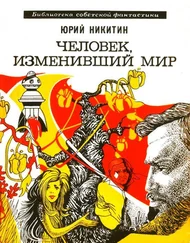

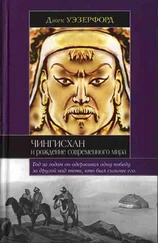
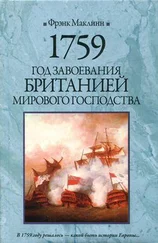

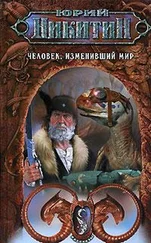
![Ксения Чепикова - Человек, научивший мир читать [История Великой информационной революции]](/books/388624/kseniya-chepikova-chelovek-nauchivshij-mir-chitat-ist-thumb.webp)
